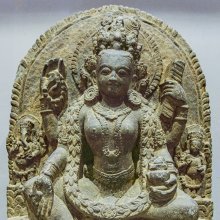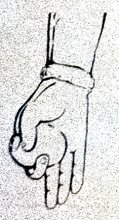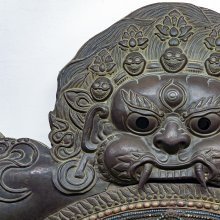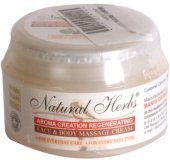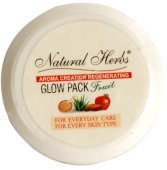Creation: 4 definitions
Introduction:
Creation means something in Hinduism, Sanskrit. If you want to know the exact meaning, history, etymology or English translation of this term then check out the descriptions on this page. Add your comment or reference to a book if you want to contribute to this summary article.
Images (photo gallery)
(+27 more images available)
In Hinduism
Vastushastra (architecture)
Source: archive.org: Bharatiya vastu-sastraCreation (of the world) and its planning [i.e., vāstu] are twin sisters. The author of the Samarāṅgaṇasūtradhāra must be having this fundamental truth in mind when he says (cf. 2nd Chapter, 4th verse) that Brahmā, before creating this world, created Vāstu. Cosmologically, therefore, all this creation is a planned unit. This is a universal aspect and it corroborates the fundamental truths of life and conduct forming the first essence of civilisation, in which the ordered society and lawful, peaceful, beautiful way of life is to be evolved. Hence the planning of such a part of the Universe viz. the Earth, requires concentrated effort of the trinity or triad, i. e. the architect-planner, the patron king and the substratum, the earth.
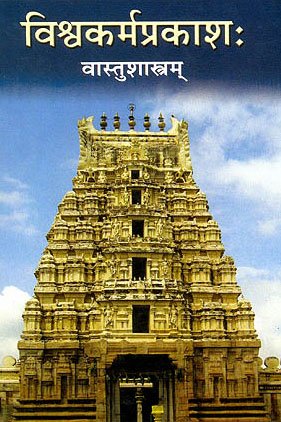
Vastushastra (वास्तुशास्त्र, vāstuśāstra) refers to the ancient Indian science (shastra) of architecture (vastu), dealing with topics such architecture, sculpture, town-building, fort building and various other constructions. Vastu also deals with the philosophy of the architectural relation with the cosmic universe.
Purana and Itihasa (epic history)
Source: Shodhganga: Elements of Art and Architecture in the Trtiyakhanda of the VisnudharmottarapuranaCreation (in Sanskrit: sarga) refers to one of the Five characteristics of Puranas or Puranic literature: a category of ancient Sanskrit texts which gives a huge contribution in the development of Indian literature.—According to the Matsyapurana and the Vayupurana, there are five characteristic features of Puranas. These are—sarga, pratisarga, vamsha, manvantara and vamshanucarita.

The Purana (पुराण, purāṇas) refers to Sanskrit literature preserving ancient India’s vast cultural history, including historical legends, religious ceremonies, various arts and sciences. The eighteen mahapuranas total over 400,000 shlokas (metrical couplets) and date to at least several centuries BCE.
Shilpashastra (iconography)
Source: Shodhganga: Elements of Art and Architecture in the Trtiyakhanda of the Visnudharmottarapurana (shilpa)Creation of Colours is an important topic in the ancient Indian tradition of Painting (citra), according to the Viṣṇudharmottarapurāṇa, an ancient Sanskrit text which (being encyclopedic in nature) deals with a variety of cultural topics such as arts, architecture, music, grammar and astronomy.—Colours have been classified in two categories (viz., primary/natural and mixed/artificial). In the Viṣṇudharmottarapurāṇa, five colours are regarded as the primary ones, (viz., white, yellow, colour of vilomata, black, dark blue.) Mixing of colours is a great technique used by the artists to make numerous shades of colours. According to the Viṣṇudharmottarapurāṇa, a painter can create hundreds or thousands of colours by amalgamating the primary colours.

Shilpashastra (शिल्पशास्त्र, śilpaśāstra) represents the ancient Indian science (shastra) of creative arts (shilpa) such as sculpture, iconography and painting. Closely related to Vastushastra (architecture), they often share the same literature.
Yoga (school of philosophy)
Source: ORA: Amanaska (king of all yogas): A Critical Edition and Annotated Translation by Jason BirchThe Creation (of the worlds) is denoted by the Sanskrit term Sṛṣṭi, according to verse 10.16 of Sureśvarācārya’s Mānasollāsa.—Accordingly, “By merely his own will, [the Yogin] is the agent of creation (sṛṣṭi), preservation and destruction of worlds [lokānāṃ sṛṣṭisthityantakartṛtā] and the master of the sun and so on. This is called [the Siddhi of] sovereignty”.

Yoga is originally considered a branch of Hindu philosophy (astika), but both ancient and modern Yoga combine the physical, mental and spiritual. Yoga teaches various physical techniques also known as āsanas (postures), used for various purposes (eg., meditation, contemplation, relaxation).
See also (Relevant definitions)
Ends with: Agent of creation, Recreation.
Full-text (+1376): Srishti, Sarga, Pratisarga, Urdhvasrotas, Nirmana, Svapnasrishti, Bhutasarga, Visrishti, Nirmita, Tamas, Anugrahasarga, Tiryaksrotas, Purana, Utpadana, Atisrishti, Nirmiti, Sarjana, Srijana, Nisarga, Kaumarasarga.
Relevant text
Search found 358 books and stories containing Creation; (plurals include: Creations). You can also click to the full overview containing English textual excerpts. Below are direct links for the most relevant articles:
Brahma Sutras (Shankaracharya) (by George Thibaut)
II, 1, 28 < [Second Adhyāya, First Pāda]
I, 3, 30 < [First Adhyāya, Third Pāda]
I, 4, 14 < [First Adhyāya, Fourth Pāda]
The Brahmanda Purana (by G.V. Tagare)
Chapter 5 - The Creation of the Universe < [Section 1 - Prakriyā-pāda (section on rites)]
Chapter 37 - Cākṣuṣa Manvantara and dynasty of Vaivasvata Manu < [Section 2 - Anuṣaṅga-pāda]
Chapter 8 - God Brahmā’s mental creation < [Section 2 - Anuṣaṅga-pāda]
Cidgaganacandrika (study) (by S. Mahalakshmi)
Verse 27 [Kāli realised as one in all dual creations] < [Chapter 2 - Second Vimarśa]
Verse 49 [Śakti’s effulgence causes creations and forms] < [Chapter 2 - Second Vimarśa]
Verse 64 [Jīva, Aham and Idam] < [Chapter 2 - Second Vimarśa]
Prasthanatrayi Swaminarayan Bhashyam (Study) (by Sadhu Gyanananddas)
3.4. Eternal and Indistinct < [Chapter 3 - Analysis on the Basis of Metaphysics]
3.8. Māyā and the Creation of the Universes < [Chapter 3 - Analysis on the Basis of Metaphysics]
5.3. Kartā: Parabrahman as Omni-agent < [Chapter 3 - Analysis on the Basis of Metaphysics]
The Agni Purana (by N. Gangadharan)
Chapter 17 - Description of Creation
Chapter 380 - Knowledge of non-dual Brahman (advaita-brahma-vijñāna)
Mandukya Upanishad (Gaudapa Karika and Shankara Bhashya) (by Swami Nikhilananda)
Mandukya Karika, verse 3.15 < [Chapter III - Advaita Prakarana (Non-duality)]
Mandukya Upanishad, verse 4 < [Chapter I - Agama Prakarana (Scripture)]
Mandukya Karika, verse 2.8 < [Chapter II - Vaitathya Prakarana (Illusion)]
Related products
(+15 more products available)
